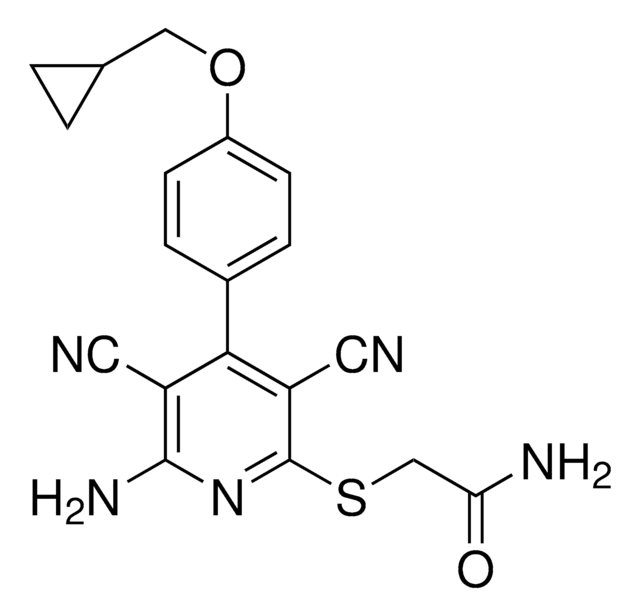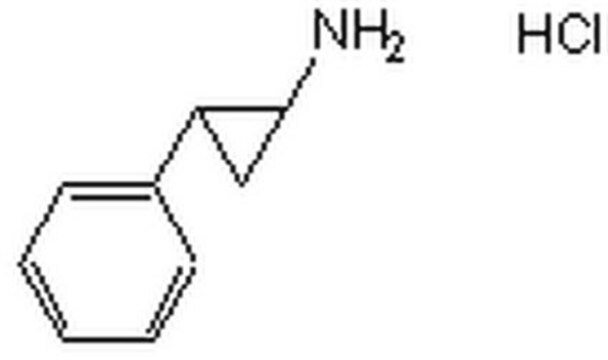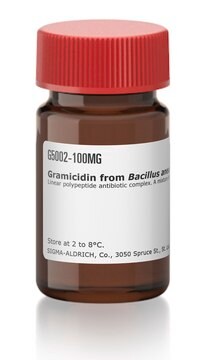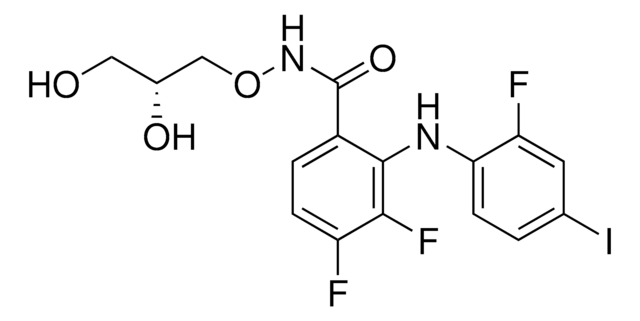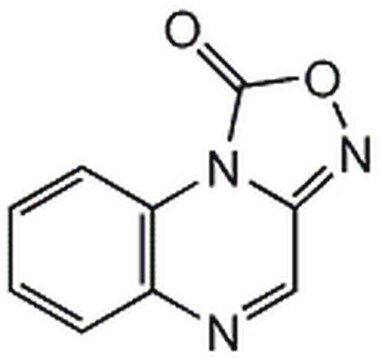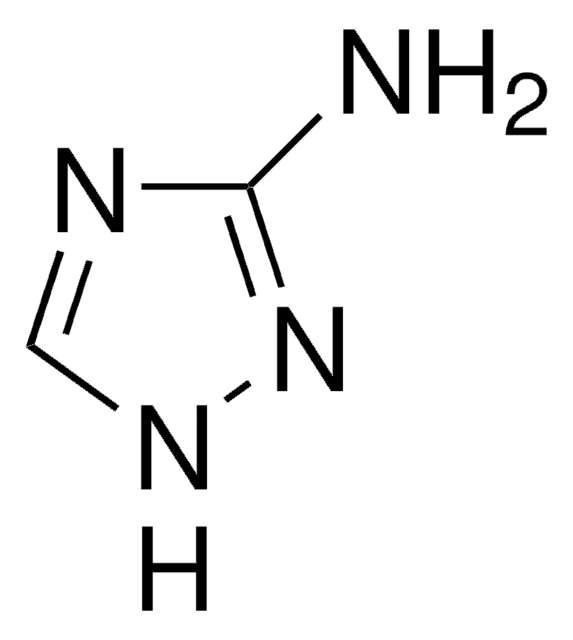A6563
6-Anilinoquinoline-5,8-quinone
≥95% (TLC), solid
Sinonimo/i:
6-(Phenylamino)-5,8-quinolinedione, LY-83,583, LY83583
Autenticatiper visualizzare i prezzi riservati alla tua organizzazione & contrattuali
About This Item
Formula empirica (notazione di Hill):
C15H10N2O2
Numero CAS:
Peso molecolare:
250.25
Numero MDL:
Codice UNSPSC:
41106305
ID PubChem:
NACRES:
NA.77
Prodotti consigliati
Saggio
≥95% (TLC)
Stato
solid
Colore
violet
Solubilità
0.1 M HCl: 1 mg/mL
methanol: 11 mg/mL
ethanol: 8 mg/mL
Temperatura di conservazione
2-8°C
Stringa SMILE
O=C1C=C(Nc2ccccc2)C(=O)c3cccnc13
InChI
1S/C15H10N2O2/c18-13-9-12(17-10-5-2-1-3-6-10)15(19)11-7-4-8-16-14(11)13/h1-9,17H
GXIJYWUWLNHKNW-UHFFFAOYSA-N
Applicazioni
6-Anilinoquinoline-5,8-quinone inhibits soluble guanylate cyclase and cGMP production. 6-Anilinoquinoline-5,8-quinone also blocks the release of intracellular Ca2+ and antigen-induced leukotrienes.
Azioni biochim/fisiol
Blocks cGMP production; inhibits intracellular Ca2+ release; blocks the effects of nitric oxide. Inhibits antigen-induced leukotriene release.
Codice della classe di stoccaggio
11 - Combustible Solids
Classe di pericolosità dell'acqua (WGK)
WGK 3
Punto d’infiammabilità (°F)
Not applicable
Punto d’infiammabilità (°C)
Not applicable
Scegli una delle versioni più recenti:
Possiedi già questo prodotto?
I documenti relativi ai prodotti acquistati recentemente sono disponibili nell’Archivio dei documenti.
Rajendra Patel et al.
Journal of vascular surgery, 43(2), 364-371 (2006-02-16)
Smooth muscle cells (SMCs) from prosthetic vascular grafts secrete higher levels of collagen than aortic SMCs under basal conditions and during incubation with oxidized low-density lipoprotein. We postulated that reactive oxygen species (ROS) contributed to the observed difference. The objective
Amaury de Montaigu et al.
The Plant cell, 22(5), 1532-1548 (2010-05-06)
Nitrate assimilation in plants and related organisms is a highly regulated and conserved pathway in which the enzyme nitrate reductase (NR) occupies a central position. Although some progress has been made in understanding the regulation of the protein, transcriptional regulation
Vladimir A Snetkov et al.
Cardiovascular research, 89(1), 214-224 (2010-09-02)
the aim of this study was to determine the relative importance of Ca(2+) sensitization, ion channels, and intracellular Ca(2+) ([Ca(2+)](i)) in the mixed constrictor/relaxation actions of superoxide anion on systemic and pulmonary arteries. pulmonary and mesenteric arteries were obtained from
Greg A Knock et al.
Free radical biology & medicine, 46(5), 633-642 (2008-12-24)
Reactive oxygen species play a key role in vascular disease, pulmonary hypertension, and hypoxic pulmonary vasoconstriction. We investigated contractile responses, intracellular Ca(2+) ([Ca(2+)](i)), Rho-kinase translocation, and phosphorylation of the regulatory subunit of myosin phosphatase (MYPT-1) and of myosin light chain
I Fleming et al.
British journal of pharmacology, 103(1), 1047-1052 (1991-05-01)
1. The aim of this investigation was to study the relationship between contractile responsiveness, activation of the L-arginine pathway and tissue levels of guanosine 3':5'cyclic monophosphate (cylic GMP) in aortic rings removed from rats 4 h after intraperitoneal administration of
Il team dei nostri ricercatori vanta grande esperienza in tutte le aree della ricerca quali Life Science, scienza dei materiali, sintesi chimica, cromatografia, discipline analitiche, ecc..
Contatta l'Assistenza Tecnica.
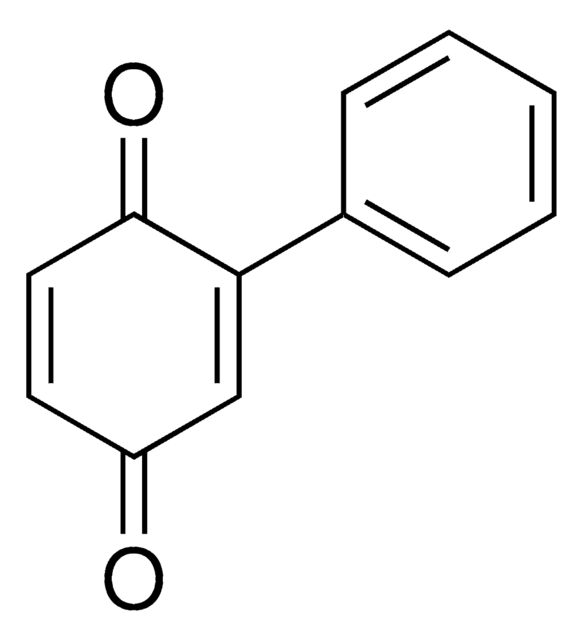
![Benz[g]isoquinoline-5,10-dione 99%](/deepweb/assets/sigmaaldrich/product/structures/484/029/288c4a9d-19c2-4b51-82c1-f43b50ea05b0/640/288c4a9d-19c2-4b51-82c1-f43b50ea05b0.png)
